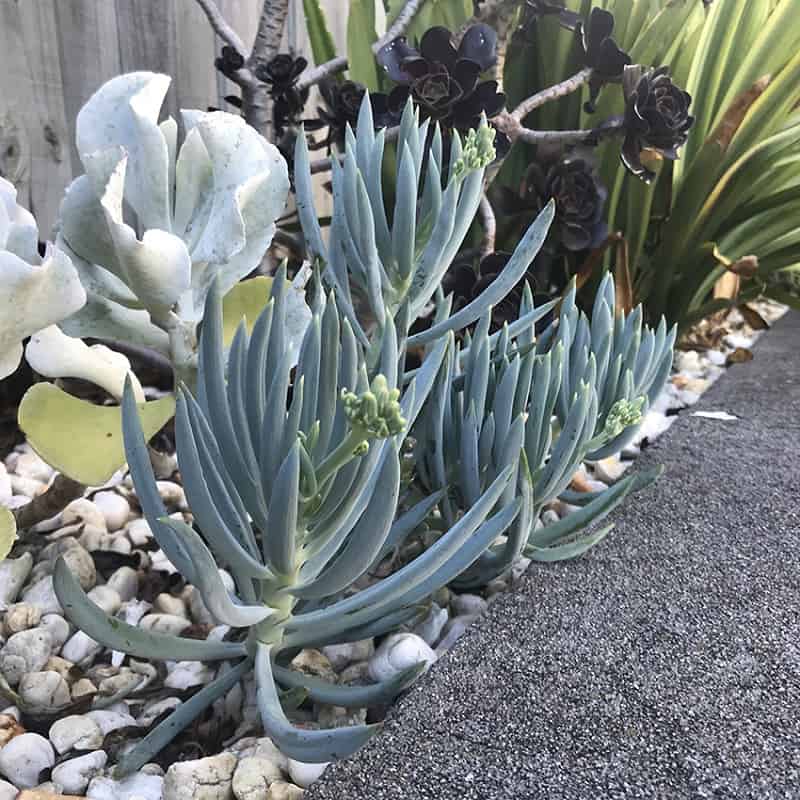The Senecio Serpens or commonly known Blue Chalksticks.
This succulent is ideal for planters. I invite you to meet her.
Senecio Serpens is a succulent plant of the genus of senecios species belonging to the family of Asteraceae or composites.
It is native to South Africa although it has adapted perfectly to all the dry and warm regions in which it has been introduced.
It grows in the form of a creeping shrub of about 20-25 cm tall.
Horizontally it can occupy large areas when the stems fall by their own weight and creep across the surface of the earth causing adventitious roots by their nodes.
That is why it is a plant widely used to fix flower beds or cover floors.
It requires little irrigation and good amounts of sun.
In summer it produces small white flowers.
You may like the Thimbles Cactus
Tips to take care of the Senecio Serpens (Blue Chalksticks)
Temperature
The Senecio Serpens can live in a full sun or light shade exposure.
In very hot summer climates they prefer semi-shade.
It does not tolerate frost below -3 ° C, with winter blankets being convenient above 6 C.
Senecio Serpens (Blue Chalksticks) grow more actively during warmer months.
If your succulents are planted in containers and do not live in a warmer zone, bring them inside until the weather warms up again.
Soil
A good soil for these plants would be a commercial substrate for cacti or a mixture of 50% garden soil and 50% coarse siliceous sand.
Watering
Water moderately in spring and summer at the rate of watering every 2 weeks. In winter, irrigation will be enough every month and a half.
Fertilizing
You can fertilize “Chalksticks” once a year, but if you are growing them indoors, be sure they are getting plenty of sunlight.
Pruned
They can be pruned slightly after flowering in case you want to control their growth.
Pests
These plants do not present major problems of pests and diseases if they are not irrigated in excess.
Propagation
The best way to multiply them is from stem cuttings made in spring or summer.
use a sterile, sharp knife or pair of scissors.
Remove a leaf from the main plant, and allow it to callous for several days before placing on well-draining soil.
Water whenever the soil has dried out completely.
If you want to do it by seed be sure that the temperature is warmer, or you are using a grow light and seed warmer. Sow seeds in well-draining soil, watering whenever the soil is dry. Germination can take several weeks or longer, depending on your growing environment
Conclusion
A small, low growing succulent, branching from the base and rooting along the stems to provide an easy-care, attractive groundcover for warm sunny hillsides and yards.
This succulent is perfect for container gardens. If you live in an area that doesn’t experience freezing temperatures.
But if is the case you can work with it.
Another fact it is widely used as a rockery plant, since its water needs are low.
Hope this article was helpful if you have any question please let me know.
